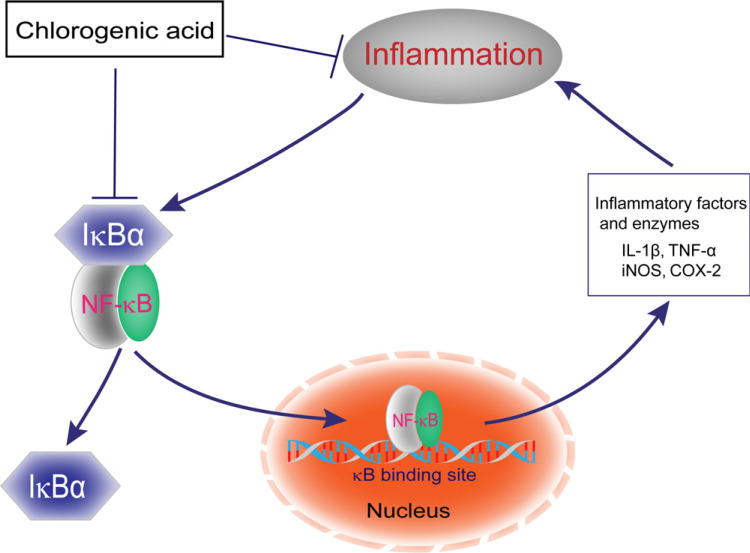Fig. (2).
Anti-inflammatory mechanism of chlorogenic acid. In the absence of external stimuli, NF-κB is sequestered and repressed in the cytoplasm by the inhibitory protein I-κBα. When other factors stimulate the body, I-κBα will be degraded and NF-κBis activated. Then the activated NF-κB enters the nucleus and binds to the κB site to increase the release of a variety of cytokines and enzymes, such as TNF-α, IL-1β, iNOS and COX-2, and cause inflammation. However, CGA exerts anti-inflammatory effects by inhibiting the activation of NF-κB. (A higher resolution / colour version of this figure is available in the electronic copy of the article).

